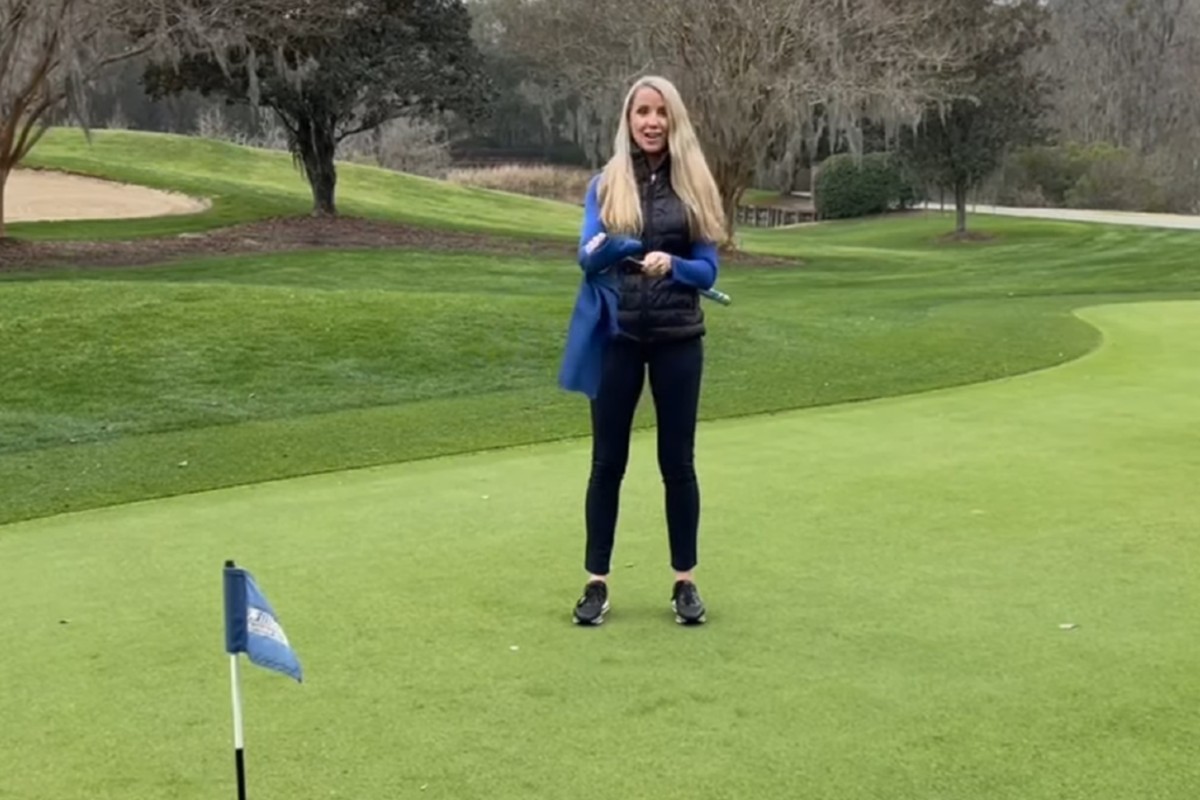Just as irons and woods should be custom fit to your individual stance and swing, so should your putter. While the importance of a putter that is visually appealing at address cannot be overstated, a properly fitted putter that has been adjusted for you both statically and dynamically can have a dramatic effect on putting performance. Most golfers are confused about the putter fitting variables and do not realize that the right combination of these variables could help you with your putting challenges. Basically, if you are not setting up to the golf ball correctly or using the type of putter that fits you and your stroke, distance, direction, and confidence can be significantly affected.
The variables to look at are length, lie angle, loft, headweight, and grip size/style. Conditions and kinds of greens you play on are also reviewed. Static fitting is a good starting point, but might not be enough…when you begin to take the putter back, things change and the point of impact becomes the important position to validate all of the fitting variables.
Ideally, putter fitting done at a studio with cameras and lasers is the most truth-telling. However, much can be learned from a simple fitting session with a putter fitting tool to help measure the fitting variables. This session, coupled with an understanding of the different putters and why they are designed the way they are can help you make some educated choices about this most important club in your bag.
1. PUTTER LENGTH
This variable is not based on your standing height, rather it is measured in your regular address position. Depending on your comfort and style of stroke, your putter may range in length from 30-42 inches in fractional increments. Looking at your set-up and seeing if your eyes are over the golf ball/target line is a good starting point in length, along with your arm hang and stroke style. Interestingly, the industry standard of 35 inches may be too long for many golfers. Note that shortening the shaft and re-gripping the club may adjust the length to where you want it, but could alter several other elements of the club…it will stiffen the flex of the shaft and lighten the club weight. You could lose feel with too stiff of a shaft and if the clubhead is too light, you won’t “stroke” the ball, but instead might “hit” it based on feel.
A final note about length: many instructors recommend that you position your eyes over the ball at address. If your putter is too short, your eyes will be well outside the line. If your putter is too long, your eyes will be well inside the line. Neither of these will promote a consistent stroke.

2. LIE ANGLE
Lie angle is determined by your preferred hand position and length of the putter, so your posture at address is an important factor when checking this variable. The lie angle is the position of the putter sole in relation to the ground. Most golfers do best with a putter that allows you to make a stroke with the sole parallel to the putting surface, enhancing your ability to square the putter to the target line. (Squareness is the angle of the heel and toe relative to the target line when contact is made with the ball.) When checking the lie angle, it is important to use the same putter, gripped at the same length that was used to determine the best length for you. When you are in this position, the person fitting you can read the shaft angle and this can be adjusted upright or flat as needed. (Example: if the toe is up in the air, the putter is too long or the lie angle is too upright and the club can be shortened or the lie angle flattened).
3. LOFT
Loft plays an important role to help get the ball rolling and tracking along the intended line. Loft on putters is necessary to lift the ball out of the shallow depression it rests in on the green. Research suggests a putter moving “up” at impact will generate the best roll. A putter’s loft should fall in the range of 3-5 degrees at impact, taking into account green conditions and the player’s stroke style. Many times, you want a bit more loft for Bermuda greens and less for bent grass greens. Loft can also be affected by ball position. If you play the ball forward in your stance, you are manually manipulating the loft. Your goal with this variable is to get a good roll as soon as possible as a ball that skids too far along the ground after impact is distance and directionally affected.
4. HEAD WEIGHT
This is a bit of a personal preference, but worth noting. Many golfers who have a slow stroke might prefer a heavy putter head and golfers with a faster stroke may prefer a lighter putter. Most putter heads are weighted for a 35-inch shaft and are likely too light for shorter lengths and too heavy for longer lengths. Ideally, having the putter built versus adjusted after the purchase will help with the variable of head weight.

5. GRIP
This is usually a matter of personal preference based on comfort and “feel” through a golfer’s hand size and stroke preference also come into play. Golfers who prefer a pendulum-type stroke may benefit from a deeper profile grip, which can reduce wrist action and encourage the golfer to swing more with his or her arms and shoulders. Golfers who prefer a wristy stroke may prefer a smaller grip diameter to encourage the release during the stroke.
Here are some of the other putter selection factors to keep in mind.
6. MALLET OR BLADE?
While you should consider a putter based on looks and feel, the kind of stroke you make generally works best with a certain kind of putter. If you swing with an “arc” or described as an inside to square stroke (or if you pull many putts), you might benefit from a heel shafted putter with more weight on the toe. Conversely, if your putting stroke is more straight back-straight through or described as a pendulum-type stroke (or if you push many putts), you might benefit from a face balanced putter (ones that have the shaft in line with the center of the clubface).
Don’t know if your putter is face-balanced or has “toe-hang”? Balance the shaft on your index finger. If the face points towards the sky, it is face-balanced. If the toe points towards the ground, it has “toe-hang” or is heel shafted.
7. FACE INSERTS
For golfers who prefer a softer feel or a dampening sound of hard golf balls, consider a putter with a face insert such as polymer. If you like a harder feel or crisper sound, consider a metallic face putter.

8. MOMENT OF INERTIA (MOI)
The moment of inertia is the term used to describe a clubhead’s resistance to twisting when the ball is struck. For example, your swing is a little off and you hit the toe of the clubhead or you strike a putt off-center. A clubhead with a higher MOI will twist less, reducing the effect on the shot. According to conventional wisdom, putts struck off-center result in the putter head twisting, imparting a sideways roll and consuming energy that otherwise would have been transferred to the ball. The result is short, off-line putts.
Now, just like the game improvement golf clubs, many putters come with heel-toe weighting, resulting in a higher MOI and greater stability at impact….perhaps improved putting!
In the game of golf, it always comes back to “feel”. Unless a putter “feels” right in your hands, sounds right to your ear and looks good to you, you won’t have the necessary confidence to make the kind of stroke that makes more putts. The perfect putter is out there for you…you just need to narrow it down and find the one that suits you.
Here’s to your renewed success on the greens.
Deb








